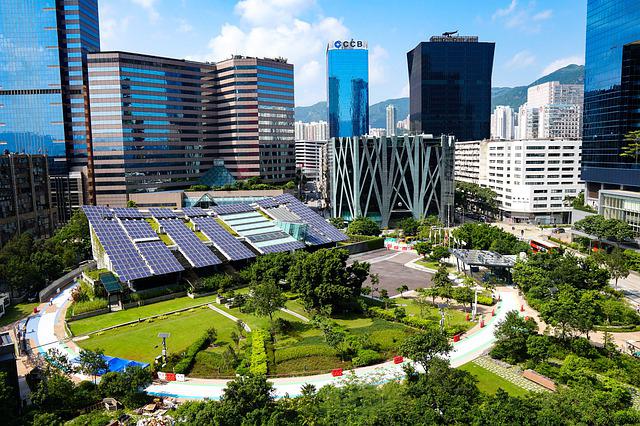A green lease is a lease in which the tenant cooperates in making energy efficient improvements to the landlord’s building. Unquestionably, the cause is worthy. However, if the costs and risks are not well managed, the project is likely to fail because either the landlord or the tenant or both could suffer costs that they cannot bear. A green lease raises a variety of problems which affect financing, insurance, construction and energy as well as standard property issues.
Cost issues are most often dealt with in the service charges. Problems for tenants arise because it is the tenants who consume all the energy and pay all the electricity and heating bills (and therefore save money from the efficiency measures). On the other hand, the required improvements can be very expensive, will often last for decades and will increase the value of the landlord’s property. If a tenant is not careful, the landlord will turn this into a way to make the tenant pay to improve the building. There is very little regulation of commercial leases, so tenants need pay very careful attention to these clauses.
Why is the green lease happening now?
Commercial Property accounts for 7% of all carbon emissions in the UK, so this is a key part of achieving climate change goals. Currently, subject to certain exceptions, it is unlawful to grant a lease of premises in the most inefficient commercial buildings, which is those with a rating of E. The government’s intention is that this will be tightened up to rating B within 8 years. From this, it is clear that things are going to move quite fast. It is referred to in the industry as minimum energy efficiency standards (“MEES”).
Some practical issues to bear in mind
Improving the efficiency of buildings to this level may entail retrofitting buildings for efficiency as well as adding new infrastructure to produce heat and electricity (heat pumps, solar panels etc). The costs of achieving this will fall most heavily on older buildings, which are generally less efficient.
The rush to accomplish these climate goals in a short timeframe may push up the cost of the equipment and the specialists who design and install the systems.
This all means that Landlords should have a plan about how this is going to be achieved and paid for. There are still many Landlords across the country who say they have no planned maintenance programme for their commercial buildings. While that may mean that the building just needs no maintenance at all, it may also mean that the forthcoming obligations to improve energy efficiency will take them by surprise – which will increase the cost to the tenant. Depending on the energy rating of the building and the length of the intended lease, it could even be worth the tenant raising this issue in the lease, to ensure that the tenant’s interests are adequately taken account of.
What is so unusual about “green” issues in a green lease?
A green lease establishes mechanisms of cooperation between the landlord and the tenants with the goal of improving the energy efficiency of the building. Legal documents frequently lose sight of the fundamental principle that each party has an interest in the other party successfully staying in business. Nevertheless, it is entirely new that landlords and tenants create formal mechanisms to cooperate in a flexible way on an ongoing basis. That should also convey the magnitude of what is quietly happening.
A key issue is for tenants to share their energy consumption data. That may sound a bit dry but it is vital for the engineers to calculate how much energy is used and when. They use this data to calculate the size and type of systems which are best installed in a building. The models created may also form the basis of any application for financing for the systems.
The second key issue is who pays for energy consumption reduction measures and who pays for any new equipment, for example, heat pumps, solar panels, thermal coupling systems:
- The expenses may go far beyond anything that established sinking funds were calculated to cope with, particularly for older, less efficient buildings.
- Even a small warehouse will need £200,000+ to replace the roof. A relatively small set of solar panels may “green” the building, but it will cost more than the entire roof. On the other hand, the energy produced is much cheaper and the energy costs are all paid by the tenants. In these circumstances, it may be that the landlord will own the solar panels and it will not have any direct effect on the service charge but it would require the tenant to be tied into consuming all the energy produced for the entire term of the lease. The price of such energy would clearly be a key issue, particularly for energy intensive businesses.
- In some buildings, particularly retail and large office buildings, it may considered desirable to instal electric car charging points but how these are managed, who manages them and how they are paid for need to be worked out carefully. Installing, commercial charging stations can easily cost high five figure sums, depending on the intended use of it and the type of electricity connection already available at the building.
The conflicting interests of Landlords and Tenants: towards a green lease solution
All this means that the landlords may be investing in upgrades to their buildings which will last for decades but trying to get tenants with relatively short leases to pay for it all. Nevertheless, the green lease can be made to work for everyone. The Landlord can improve its building and the tenant can save money but this relies on two important legal inputs:
- the service charge in the lease must strike a balance that makes it a win for the tenant over the term of the lease, and
- the landlord may need longer term financing paid for by the service charge.
On the other hand, tenants may also seek appropriate safeguards:
- the tenant should see that the works are done correctly and are covered by appropriate warranties. After all, well sourced solar panels last for decades and badly sourced panels…don’t.
- it may be appropriate for the tenants to see the design parameters and get (via the service charge) a share of any excess electricity sold to the grid.
- is it being installed by specialists? An incorrectly installed solar power can burst into flames and you need to be sure it is covered by insurance.
I have previously written about how important it is for commercial property solicitors to have an approach which is flexible enough to listen to and adapt to each client’s needs. Green lease issues makes this approach more important than ever.
None of this should put off tenants and landlords but both landlords and tenants may need to develop a new habit of cooperation beyond what was previously considered necessary and they may need specialist lawyers who have a deep understanding of not only leases but also construction and energy.
If you have any questions on leases or any other commercial property matters please contact our expert commercial lease lawyer James Williamson.



